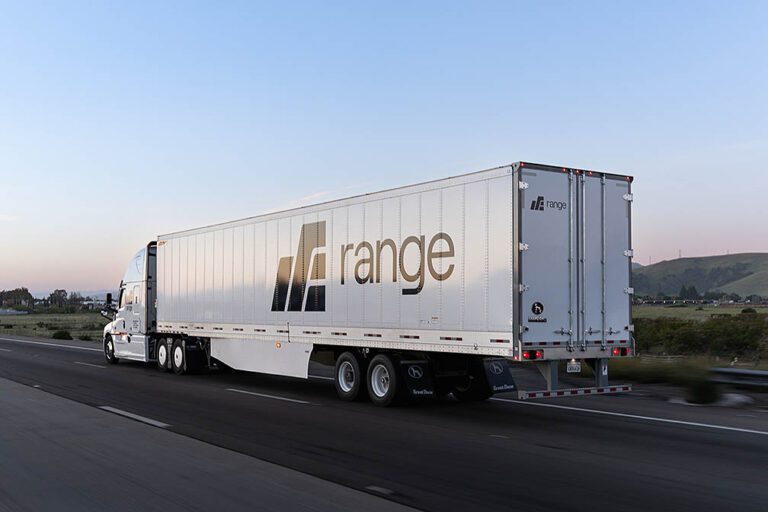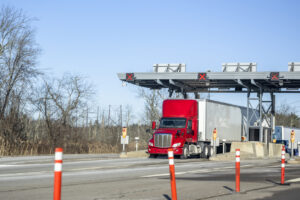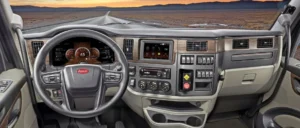LITTLE ROCK, Ark. — The press coverage of brands of heavy-duty electric vehicles is enough to confuse anyone who is currently driving an old fashioned truck with an internal combustion engine.
While they have a place in the industry, electric trucks simply don’t have the range for long-haul operations and, even if they did, the infrastructure isn’t in place yet for charging them.
Most of today’s truck drivers won’t drive one for a long time, if ever.
One company, however, is using electric vehicle technology for a product that drivers might see sooner than an electric tractor. It’s an electric trailer.
Based in Mountain View, California, Range Energy is working on something new and different. Their RA-01 dry van trailer, equipped with batteries, motor and drive axle, can provide enough extra horsepower to save the tractor owner 30-40% on fuel costs while increasing overall safety.
Range CEO and founder Ali Javidan grew up around trucks and machinery, studying mechanical engineering and working in the racing field. He followed that experience with a stint at Tesla, then Google, and finally Zoox, helping to develop their robotaxi service. He brought those experiences to Range, along with a new idea.
“All this pressure is being put on Class 8 fleets to decarbonize,” he said, “but when I look at the methods being presented, it’s like, the fleets aren’t going to use this. Are you kidding? Everybody’s talking about the tractor. Nobody’s talking about the trailer.”
Javidan’s solution is a trailer that adds to the tractor’s power on the uphill roads and to the unit’s braking power on downgrades — all without any additional actions or input from the driver.
The systems starts with the “smart” kingpin, which senses when the tractor is pulling or braking and relays the information to the electric motor that drives the front axle of the trailer bogie. The harder the pull, the more power is supplied, easing the strain on the tractor drive train on upgrades and when starting out in heavy traffic.
On downgrades, the axle helps to slow the vehicle. In testing, the effect was enough to cause the driver to turn off the engine brake to keep the truck rolling at the targeted speed. While it’s slowing the truck, the system is generating electricity that’s used to prolong the charge in the batteries.
“It’s a simple dry van or reefer trailer. We clip a battery pack to the bottom of it right under the skirt. We put a sensor in the king pin and then we replace a drive axle with a driven axle. And then all of a sudden we unlock this whole new world.”
That battery power is available for other uses, too.
It can be used to power lift gates, powered landing gear or other electrical devices, without hooking to a trailer. The drive axle can even be configured to generate electricity full time when the vehicle is moving to power an electric temperature-control unit, although the fuel savings would be impacted.
Javidan says the system will be rolled out through a major trailer manufacturer, and customers will have the option of specifying the Range system. However, the system can also be installed locally on existing trailers.
“We’ve developed the process for retrofit so that a single person with a small toolkit and a forklift can retrofit two trailers per day by himself,” Javidan explained. “We actually spend a whole day in the maintenance shops, and we’ve we basically have developed our retrofit procedure so it works in every one of these service shops. It will also work in a pop up tent that they may put on the side of their yard as a small assembly plant.”
The Range Energy trailers will also be available through trailer leasing operations, providing carriers with the ability to try out the technology before investing in a purchase.
Charging the powered trailers won’t require the construction of a bank of vehicle chargers or a change to the local grid.
“An electric Freightliner eCascadia has somewhere around 600 kilowatt hours. Our trailer has about 200 kilowatt hours and that allows us not to impact the loaded weight very much,” Javidan said. “We’ve scaled our charging solution so it actually plugs right into the shore power that’s at the loading dock, or you can charge on a regular 220 volt, 70 amp circuit overnight, just like you would your electric car, and it works great.”
The system also works with modern quick-charging systems used for larger vehicles.
The unit is equipped with a driver interface that’s similar to the display panel on a refrigerated trailer.
“You have some LEDs in the rearview mirror, you know if the system is working or if it’s in a fault state,” Javidan said. “When the system fails, however, the trailer can still be used like any standard trailer.”
The Ranger power system, including batteries, adds about 4,000 pounds to the weight of the trailer, a drawback that won’t help carriers who frequently max out on weight. While electric trucks are granted an additional 2,000 pounds of gross vehicle weight, that exemption doesn’t apply to trailers — yet. That’s something Javidan and Range Energy are working to change.
Driving with the Range package has produced some interesting comments.
“On one run, our driver with a fully-loaded trailer stopped at an intersection with an uphill pull on the other side,” Javidan related.
He said that the torque curve was so smooth that he could accelerate smoothly right on through.
Another example involved the infamous “grapevine,” a six-mile section of I-5 in Southern California known for its dangerous grade.
“It can be scary in a passenger car,” Javidan said, “and you’re either overheating on the way up or burning your brakes on the way down. Our driver, with a fully loaded trailer, throttled up the hill, passing everyone else and then didn’t touch the brakes at all on the way down. At the bottom of the hill, he had cold brakes, and all that energy went back into the battery.”
A dry van trailer with the Ranger power system is expected to be priced in the range of a refrigerated trailer. With a recent point of sale incentive of $80,000 from the California Air Resources Board, that cost is reduced to that of a typical dry van trailer. With or without incentives, the trailer is expected to pay for itself in fuel savings.
Because of the need for charging, Range equipped trailers are best suited for out-and back or local runs, although they can be pulled indefinitely without charging.
Thanks to Range Energy, fuel conserving carriers will have one more product choice for their fleets.
Cliff Abbott is an experienced commercial vehicle driver and owner-operator who still holds a CDL in his home state of Alabama. In nearly 40 years in trucking, he’s been an instructor and trainer and has managed safety and recruiting operations for several carriers. Having never lost his love of the road, Cliff has written a book and hundreds of songs and has been writing for The Trucker for more than a decade.















